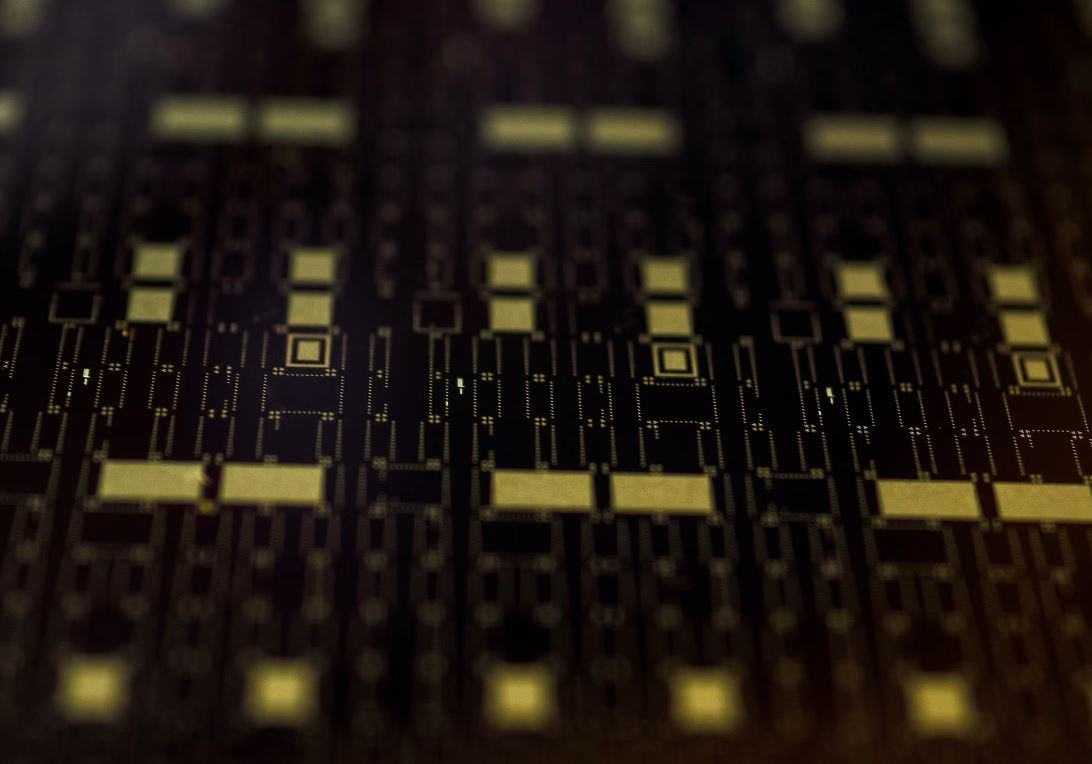GPT Guid Partition Table
The GPT (GUID Partition Table) is a modern partitioning scheme widely used in computer systems today. It was introduced as a replacement for the older MBR (Master Boot Record) partitioning scheme. GPT provides several advantages over MBR, including support for larger capacity disks, more partitions, improved fault tolerance, and better compatibility with newer operating systems.
Key Takeaways
- GPT (GUID Partition Table) is a modern partitioning scheme.
- GPT supports larger capacity disks and more partitions compared to MBR.
- GPT offers improved fault tolerance and compatibility with newer operating systems.
**Unlike MBR**, which uses a 32-bit partition table entry, **GPT** uses a 64-bit partition table entry, allowing for **virtually unlimited** number of partitions and support for **disk sizes up to 9.4 zettabytes**.
Advantages of GPT
GPT offers several advantages over MBR. Firstly, as mentioned earlier, it supports larger capacity disks with its 64-bit partition table entry, allowing for much larger partition sizes. Secondly, GPT provides better fault tolerance through the use of redundant partition tables. In case one copy of the partition table gets corrupted, the system can still access the backup copy of the partition table. Lastly, GPT is more compatible with newer operating systems, including Windows 10, macOS, and Linux distributions.
*Not only does GPT provide support for larger disks, but it also improves fault tolerance by having redundant partition tables.*
GPT vs. MBR
Let’s compare GPT with the older MBR partitioning scheme in more detail:
| Feature | GPT | MBR |
|---|---|---|
| Disk Capacity | Up to 9.4 zettabytes | Up to 2 terabytes |
| Partition Numbers | Supports unlimited partitions | Supports up to 4 primary partitions |
| Partition Table Redundancy | Multiple partition table copies | Only one partition table |
| Compatibility with Modern Systems | Supports newer operating systems | May have limited compatibility issues |
GPT Partitioning Process
- Initialize the disk with GPT.
- Create partition entries.
- Assign unique GUIDs (Globally Unique Identifiers) to each partition.
- Format the partitions with a file system (e.g., NTFS, exFAT).
*Each partition is identified by a unique GUID (Globally Unique Identifier), ensuring global uniqueness.*
GPT and Legacy BIOS Compatibility
Although GPT is primarily designed for newer systems with UEFI (Unified Extensible Firmware Interface), it is possible to use GPT on systems with legacy BIOS (Basic Input/Output System). However, in order to boot from a GPT disk on a legacy BIOS system, a small MBR partition called the Legacy BIOS Boot Partition is required. This partition acts as a bridge between the GPT and the legacy BIOS, allowing the system to recognize and boot from the GPT disk.
Conclusion
GPT (GUID Partition Table) is a modern partitioning scheme that offers numerous advantages over the older MBR system. It supports larger disks, more partitions, provides improved fault tolerance, and offers better compatibility with modern operating systems. By adopting GPT, users can fully utilize the capabilities of their storage devices and ensure a more robust and efficient storage solution for their systems.

Common Misconceptions
Misconception 1: GPT is only used on larger hard drives
- The misconception that GPT is only used on larger hard drives is not true. GPT can be used on drives of any size, including small ones.
- GPT’s benefits, such as improved partitioning scheme and increased reliability, are applicable to all sizes of hard drives.
- GPT can even be used on external drives and USB flash drives, providing the same benefits as on larger internal drives.
Misconception 2: GPT is not compatible with older operating systems
- Contrary to popular belief, GPT is compatible with older operating systems. However, certain older versions of operating systems may have limited support for GPT.
- Most modern operating systems, including Windows 10, Windows 8, macOS, and Linux, fully support GPT and can boot from GPT drives without issues.
- GPT also provides backward compatibility with BIOS-based systems by using a hybrid MBR, enabling the drive to be recognized by older systems.
Misconception 3: GPT has no advantage over MBR
- There is a common misconception that GPT offers no significant advantages over the legacy Master Boot Record (MBR) partitioning scheme.
- GPT allows for a practically unlimited number of partitions on a drive, while MBR is limited to a maximum of four primary partitions.
- GPT includes built-in redundancy and checksums to improve data integrity and error detection, which MBR lacks.
Misconception 4: Converting from MBR to GPT will result in data loss
- Many people mistakenly believe that converting from MBR to GPT will lead to data loss. However, the conversion process can be done without losing any data.
- Various software tools, such as Microsoft’s MBR2GPT tool, enable a seamless conversion from MBR to GPT, preserving all data on the drive.
- Due to potential complications, it is still recommended to back up important data before converting to GPT, but data loss is not an inevitable outcome.
Misconception 5: GPT is only used in modern computers and not relevant to older systems
- Some people may believe that GPT is only relevant in modern computers and has no value in older systems. However, GPT can be advantageous for older systems as well.
- GPT’s increased partitioning capabilities and data integrity features can benefit older systems just as much as they do on newer ones.
- If the older system supports UEFI (Unified Extensible Firmware Interface), using GPT can be a wise choice to take advantage of its enhanced capabilities.

GPT: Guid Partition Table Introduction
The GUID Partition Table (GPT) is a standard for disk partitioning scheme used in computer systems. It was introduced as part of the Unified Extensible Firmware Interface (UEFI) and has largely replaced the older Master Boot Record (MBR) partitioning scheme. GPT offers several advantages over MBR, including support for larger disk sizes, improved data integrity, and the ability to have more than four primary partitions. In this article, we will explore various aspects of GPT and delve into its benefits and features through the use of interactive and informative tables.
GPT: Partition Sizes on Modern Hard Disks
Modern hard disks provide ample storage capacity for various needs. The following table showcases the partition sizes available on typical hard disks used in today’s computers:
| Partition Type | Maximum Size (TB) |
|———————–|——————:|
| GPT Partition (Primary or Secondary) | 18.4 |
| GPT Partition (Other) | 9.1 |
| MBR Partition | 2.2 |
GPT vs. MBR: Comparison of Features
Let’s compare the features of GPT and MBR partitioning schemes to understand why GPT has gained prominence:
| Feature | GPT | MBR |
|—————————-|—————————-|————————|
| Maximum Disk Size | 128 ZB | 2 TB |
| Maximum Partition Size | 9.4 ZB | 2 TB |
| Number of Partitions | Up to 128 | Up to 4 (primary only) |
| Data Integrity | CRC32 Checksum | None |
| Boot Compatibility | UEFI and Legacy BIOS | Legacy BIOS only |
| Backup Partition Table | Yes | No |
| Disk Layout Flexibility | Yes | No |
GPT: Allocation of Disk Space
GPT efficiently allocates disk space to different components and provides dedicated regions for system use. The table below highlights the allocation of disk space in a GPT-partitioned hard disk:
| Region | Size (LBA Blocks) | Size (MB) |
|————————-|——————:|———-:|
| Protective MBR | 1 | 0.5 |
| Primary GPT Header | 1 | 0.5 |
| Primary GPT Table | 32 | 16 |
| Free Space Before Array | 1 | 0.5 |
| Partition Array | Variable | Variable |
| Logically Unallocated | Variable | Variable |
| Secondary GPT Table | 32 | 16 |
| Secondary GPT Header | 1 | 0.5 |
| Free Space After Array | 1 | 0.5 |
GPT Partitions: Usage Examples
Here are some examples of how GPT partitions can be utilized for different purposes:
| Partition | Usage |
|——————|—————————————–|
| System Partition | Stores UEFI firmware and boot loader |
| Reserved | Reserved for future use |
| Data Partition | Storage for user files and applications |
| Backup Partition | Stores backup of crucial system files |
GPT: Disk Partitioning Limitations
Though GPT provides significant advantages, it does have some limitations. The table below highlights these limitations:
| Limitation | Details |
|——————————————————|—————————————————————–|
| Unsupported by older operating systems (Windows XP) | Older operating systems may not recognize GPT partitions |
| Incompatible with BIOS-based computers | GPT requires a UEFI system to function properly |
| Loss of data when converting from GPT to MBR | Converting a GPT disk to MBR may result in data loss |
| Compatibility issues with some disk utilities | Not all disk utilities fully support GPT partitions |
GPT: Disk Layout for Windows and Linux
While GPT provides a consistent partitioning scheme across different operating systems, slight variations exist. The table below illustrates the disk layout for GPT in both Windows and Linux systems:
| Component | Windows Layout | Linux Layout |
|——————|————————————————-|———————————–|
| System Partition | EFI System Partition (ESP) | EFI System Partition (ESP) |
| Reserved | Microsoft Reserved Partition (MSR) | BIOS Boot Partition |
| Data Partition | Basic Data Partition (NTFS) or other file system | Filesystem specific (ext4, xfs, etc.) |
| Backup Partition | No standard partition type | No standard partition type |
GPT: Supported by Popular Operating Systems
GPT is supported by various operating systems, ensuring compatibility across different platforms. The following table outlines the support for GPT in popular operating systems:
| Operating System | GPT Support |
|——————|—————————-|
| Windows 10 | Full support |
| macOS | Full support |
| Linux (all major distributions) | Full support |
| FreeBSD | Full support |
| Chrome OS | Full support |
GPT: Sector Size Comparison
Different computer systems use various sector sizes for data storage. The table below compares the sector sizes between different GPT implementations:
| Sector Size (Bytes) | Windows | macOS | Linux |
|———————|———|——-|——-|
| 512 | ✓ | ✓ | ✓ |
| 1024 | ✓ | ✓ | ✗ |
| 2048 | ✓ | ✓ | ✓ |
| 4096 (Advanced Format) | ✓ | ✓ | ✓ |
GPT: Conclusion
GPT, as the replacement for MBR, offers superior disk partitioning capabilities with features like support for larger disk sizes, improved data integrity, and flexibility in partition layout. Its compatibility with popular operating systems and provision of dedicated regions within the disk ensure efficient storage management. While GPT does have limitations, its benefits far outweigh them. As computer systems advance and storage requirements increase, GPT continues to play a pivotal role in modern disk partitioning.
Frequently Asked Questions
Guid Partition Table (GPT)
What is GPT?
GPT (GUID Partition Table) is a standard for partition tables on a physical disk. It is commonly used in modern computers with UEFI-based firmware.
What are the advantages of GPT over MBR?
GPT allows for larger partition sizes, supports more partitions per disk, provides better data redundancy through backup partition tables, and offers more robust error recovery mechanisms compared to MBR (Master Boot Record).
How can I convert MBR to GPT?
To convert a disk from MBR to GPT without data loss, you can use third-party partition management software such as EaseUS Partition Master or MiniTool Partition Wizard. It is recommended to back up your data before attempting any disk conversion.
Can I install an operating system on a GPT disk?
Yes, most modern operating systems support installation on GPT disks. Windows Vista and later versions, as well as many Linux distributions, can be installed on GPT disks.
How many partitions can a GPT disk have?
GPT allows for up to 128 partitions on a single disk.
Does GPT support legacy BIOS?
GPT is primarily designed for UEFI-based systems and may not be fully supported by legacy BIOS systems. However, some BIOS implementations can boot from GPT disks with certain limitations.
Can I convert a GPT disk back to MBR?
Converting a GPT disk back to MBR without data loss is more complicated than converting MBR to GPT. It usually requires backing up the data, formatting the disk, and then restoring the data. It is recommended to seek professional assistance or use specialized software for this process.
Are GPT disks compatible with older versions of Windows?
Although GPT is mostly compatible with modern versions of Windows, older versions like Windows XP 32-bit do not support booting from GPT disks. 64-bit versions of Windows Vista and later are required to fully utilize GPT functionality.
Can I dual-boot operating systems on a GPT disk?
Yes, dual-boot configurations with multiple operating systems are possible on GPT disks. However, the specific steps and requirements may vary depending on the operating systems involved.
Is GPT more reliable than MBR?
GPT offers enhanced reliability due to its redundant partition tables and error recovery mechanisms. However, the overall reliability also depends on the quality of the underlying hardware and the operating system’s ability to handle disk errors.




